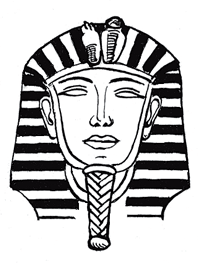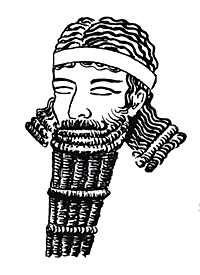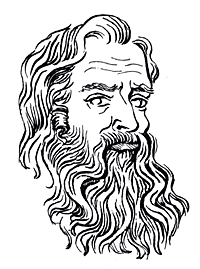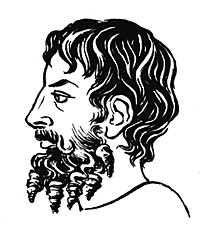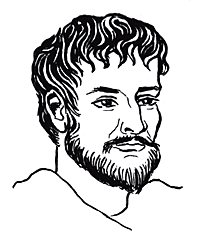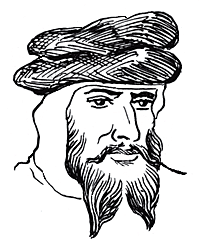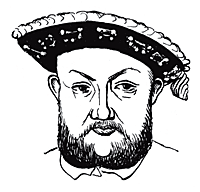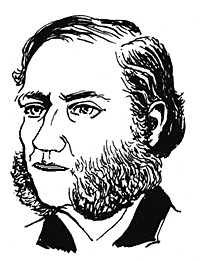Egyptian Wigs
Ready dressed wigs were worn by wealthy Ancient Egyptians of both sexes. Elaborately curled and adorned wigs were worn at special public occasions and at religious ceremonies. The normal hairstyles of the men dictated that their hair was cropped short or shaved, which was probably due to help them combat the heat. But their status and wealth could be reflected in the imposing wigs that the wore on special occasions. The women kept their hair longer but they also delighted in the elaborately adorned wigs that they were able to wear. The higher the status of the man or woman the more wigs they possessed.
Ready dressed wigs were worn by wealthy Ancient Egyptians of both sexes. Elaborately curled and adorned wigs were worn at special public occasions and at religious ceremonies. The normal hairstyles of the men dictated that their hair was cropped short or shaved, which was probably due to help them combat the heat. But their status and wealth could be reflected in the imposing wigs that the wore on special occasions. The women kept their hair longer but they also delighted in the elaborately adorned wigs that they were able to wear. The higher the status of the man or woman the more wigs they possessed.
What were Egyptian Wigs made of?
The Wigs of the Ancient Egyptians were made of human hair which was often supplemented by plant fibre or from the wool of sheep. These wigs were not just brunette or dark colored. Blond wigs were also produced. These wigs were extremely expensive and time consuming to make. One of the Ancient Egyptian wigs which has survived consists of:
The Wigs of the Ancient Egyptians were made of human hair which was often supplemented by plant fibre or from the wool of sheep. These wigs were not just brunette or dark colored. Blond wigs were also produced. These wigs were extremely expensive and time consuming to make. One of the Ancient Egyptian wigs which has survived consists of:
- 120,000 individual hairs
- The hairs were then a grouped into 300 strands
The hairs were coated with a mixture of beeswax and resin then looped through a netting and fixed into place with wax.
Egyptian Wigs for Women
The elaborate wigs of the women of Ancient Egypt consisted of a base of thin tight plaits which were covered with thick, full and luxurious curls. The styles varied as most women preferred to wear unique styles if possible with a huge variety of different adornments.
The elaborate wigs of the women of Ancient Egypt consisted of a base of thin tight plaits which were covered with thick, full and luxurious curls. The styles varied as most women preferred to wear unique styles if possible with a huge variety of different adornments.
Egyptian Wigs for Men
The wigs worn by the men of Ancient Egypt were somewhat shorter than the women's wigs, but were just as elaborate. Even though wigs and hair pieces were available to men they still worried about greying and thinning hair. Henna was used by men as a hair dye and various formulas were prescribed as hair restorers. A recipe for one Ancient Egyptian hair restorer consisted of boiling up the paw of a female greyhound, the stone of a date and the hoof of an ass.
The wigs worn by the men of Ancient Egypt were somewhat shorter than the women's wigs, but were just as elaborate. Even though wigs and hair pieces were available to men they still worried about greying and thinning hair. Henna was used by men as a hair dye and various formulas were prescribed as hair restorers. A recipe for one Ancient Egyptian hair restorer consisted of boiling up the paw of a female greyhound, the stone of a date and the hoof of an ass.
Egyptian Wigs - the AdornmentsThe adornments of Ancient Egyptian wigs included some of the following:
- Jewelry
- Gold strands
- Flowers
- Tassels
- Tiaras
- Beads
- Ribbons
- Hair bands
The hairstyle of wigs were kept in placed with clasps and hairpins.
The False Beard of the PharaohThe beard was not in fashion and men shaved facial hair but beards were considered to be sacred to the gods and therefore to the Pharaohs. The beard was considered to be a divine symbol of the gods. Depictions of Pharaohs, both the Kings and some Queens, are seen wearing false plaited beards. These false beards were religious symbols of the Pharaohs emphasizing their status as a living god. The bizarre false beards were tightly knotted and plaited and hooked behind the ears. They were worn on important religious and other ceremonial occasions.
Egyptian Wigs
Each section of this Egyptian website addresses all topics and provides interesting facts and information about the Golden Age of Egypt. The Sitemap provides full details of all of the information and facts provided about the fascinating subject of Egypt, the Ancient Egyptians and of the Pharaoh Tutankhamun, King Tut.
Each section of this Egyptian website addresses all topics and provides interesting facts and information about the Golden Age of Egypt. The Sitemap provides full details of all of the information and facts provided about the fascinating subject of Egypt, the Ancient Egyptians and of the Pharaoh Tutankhamun, King Tut.

